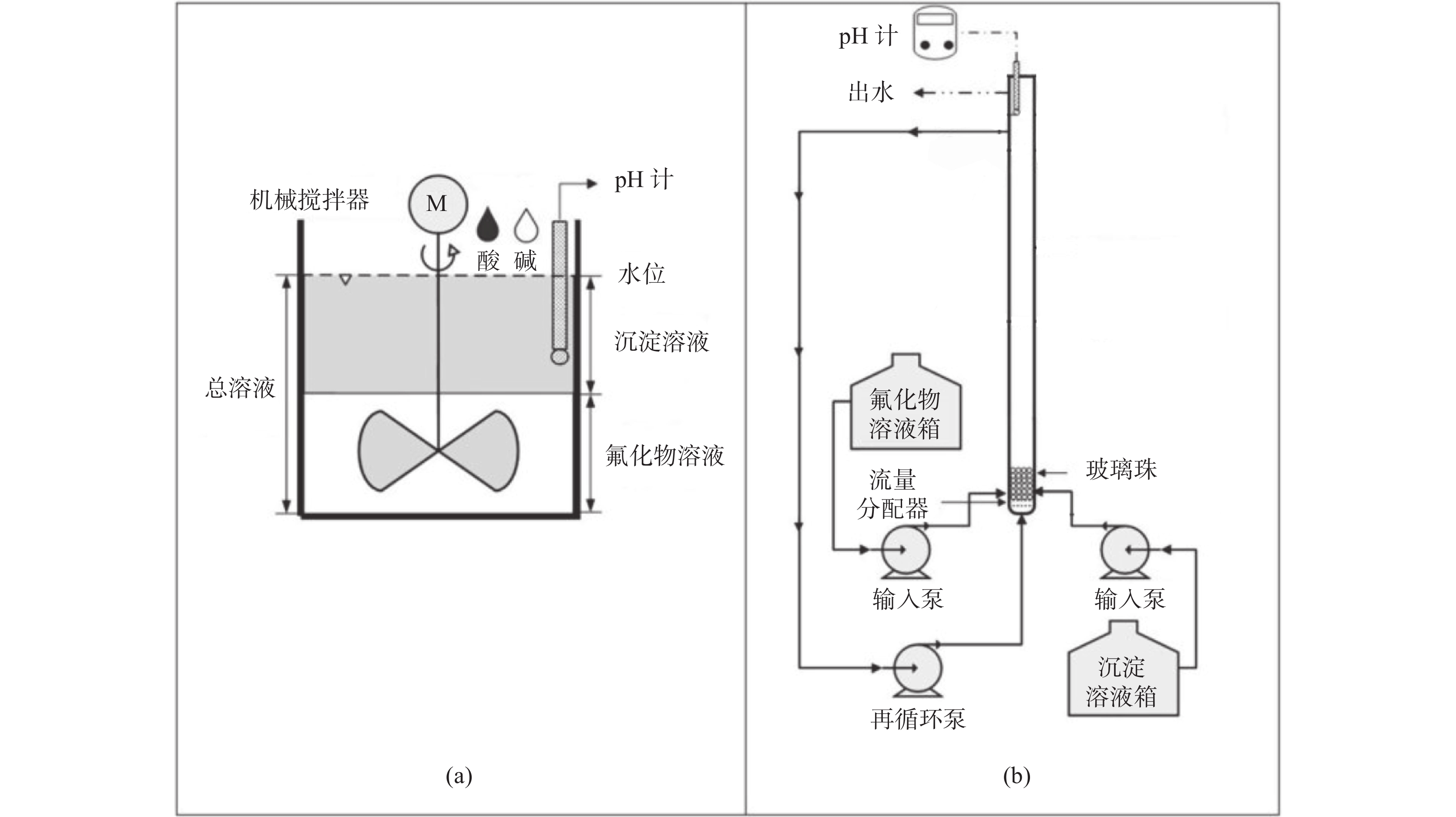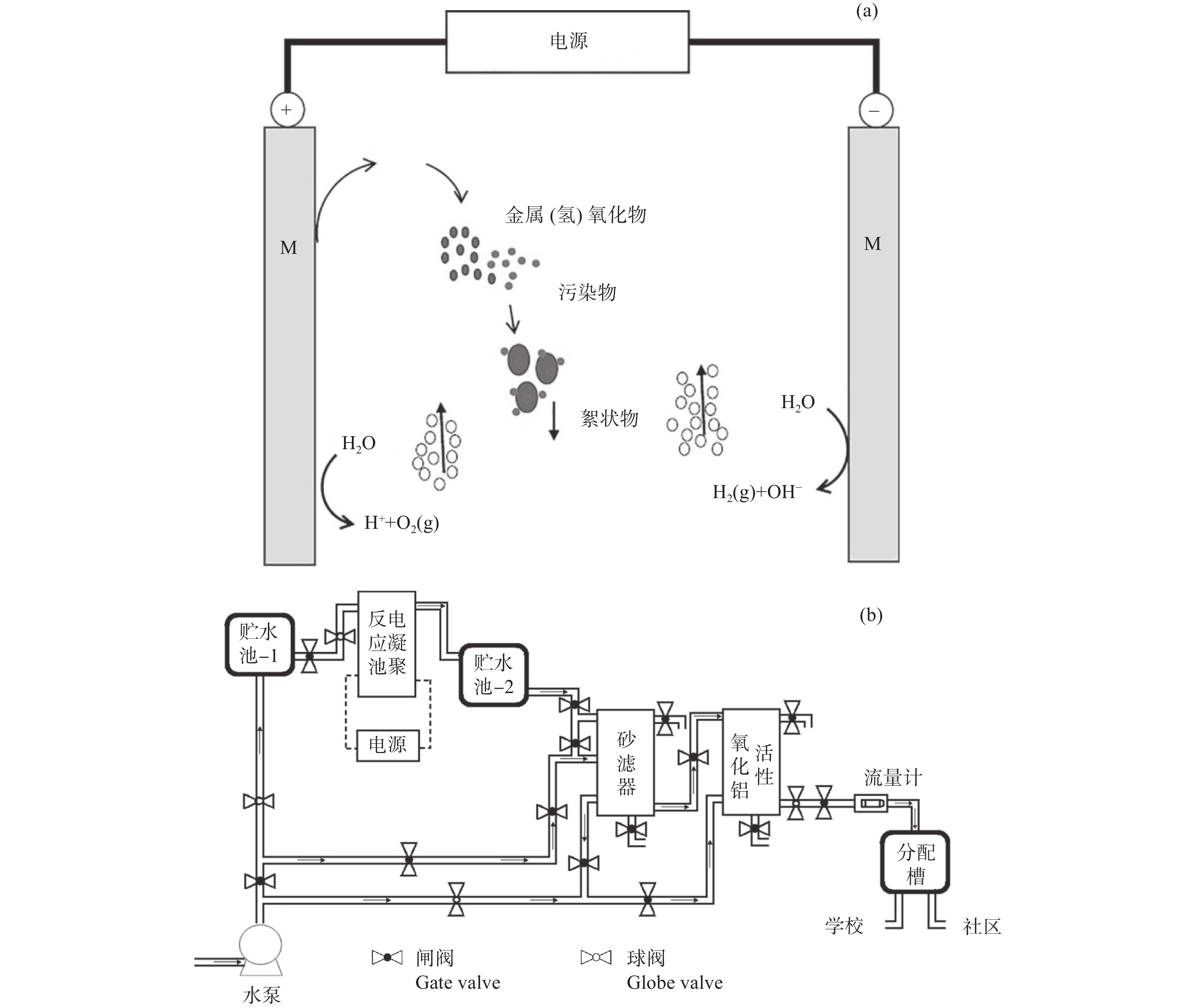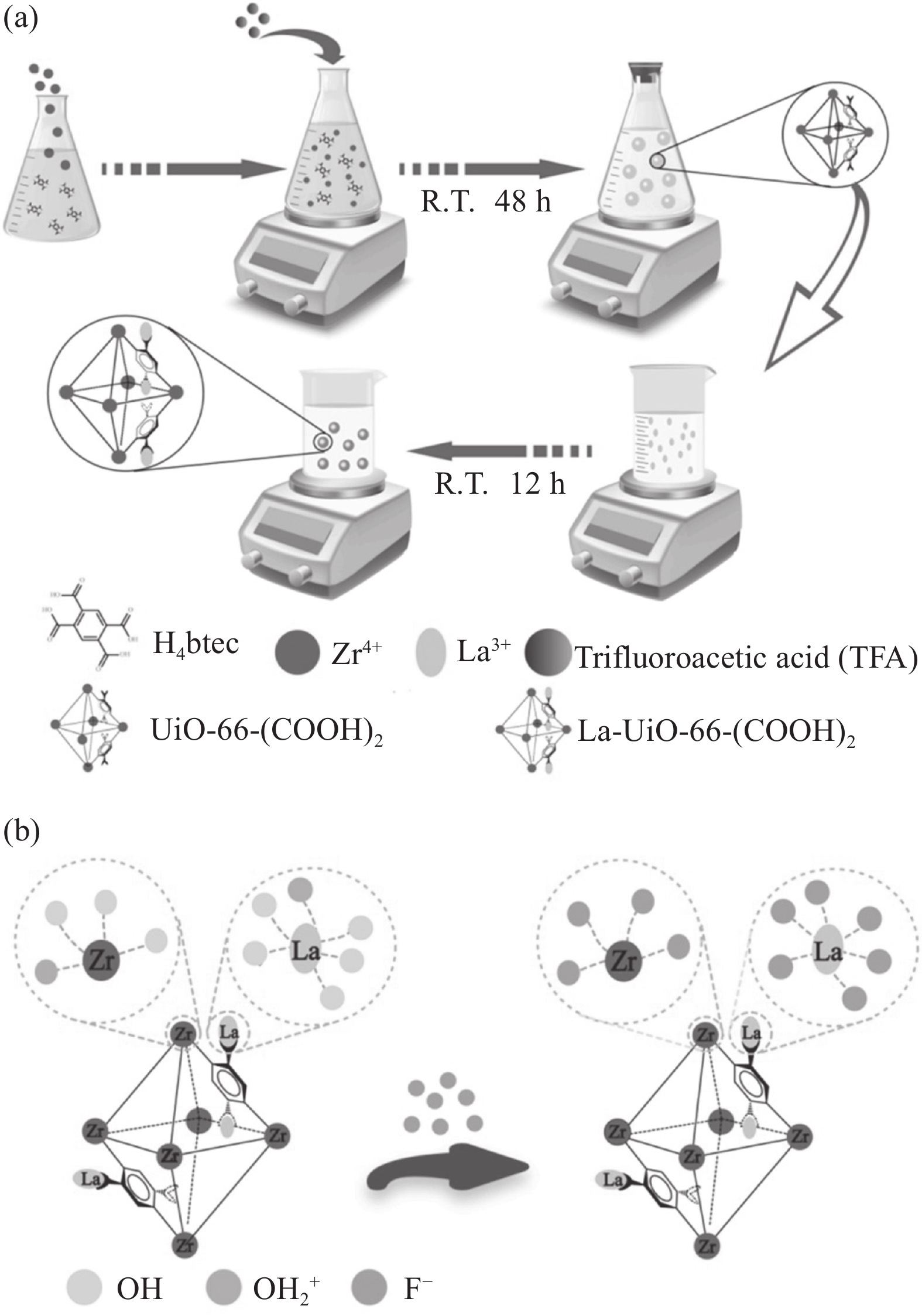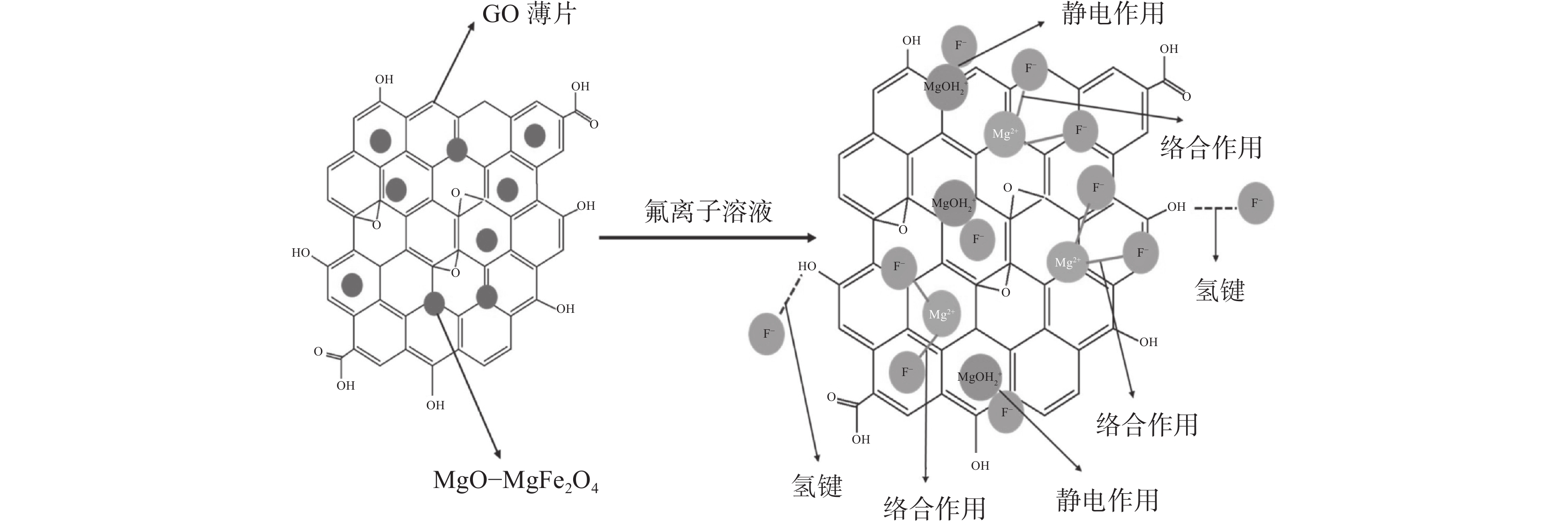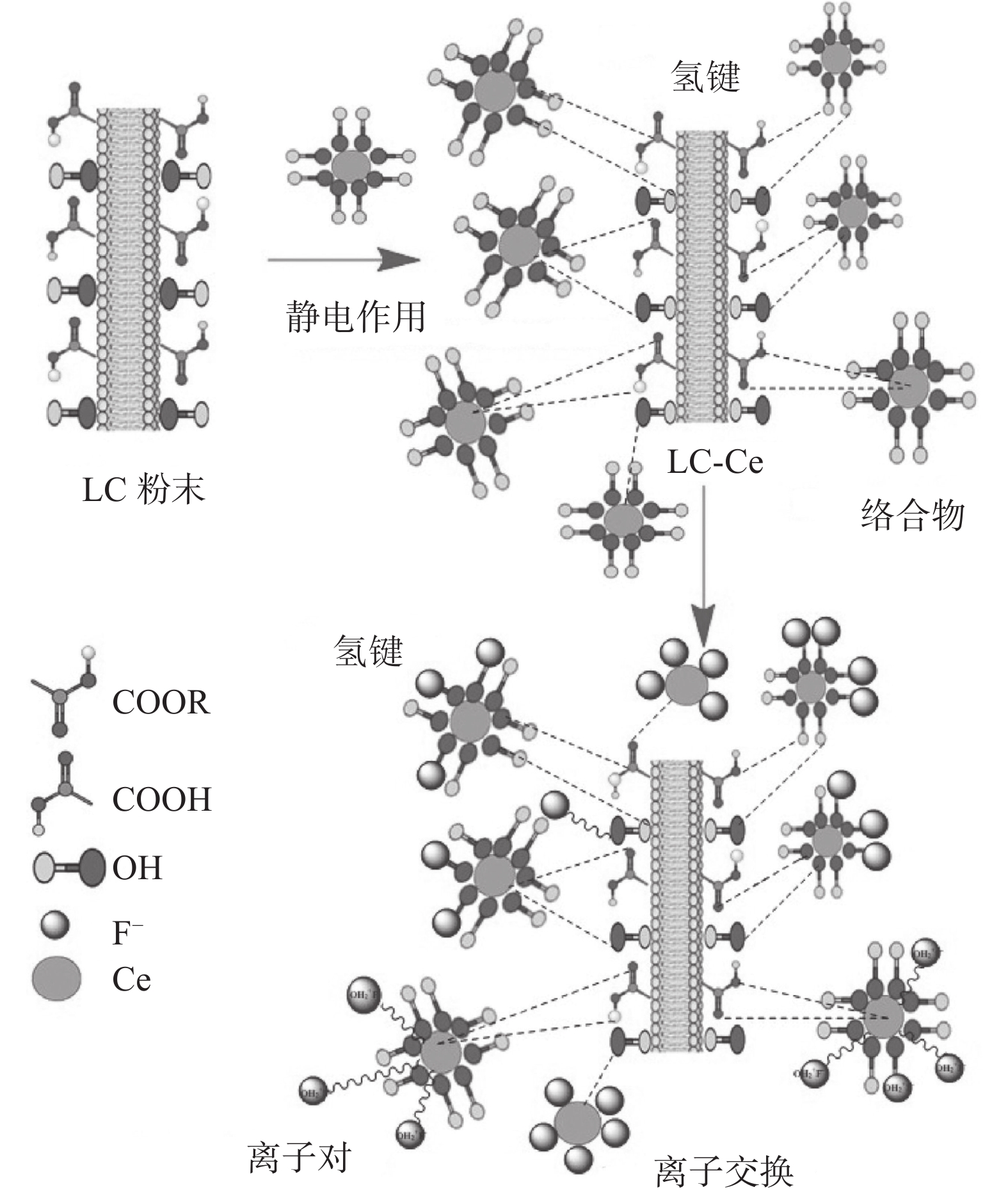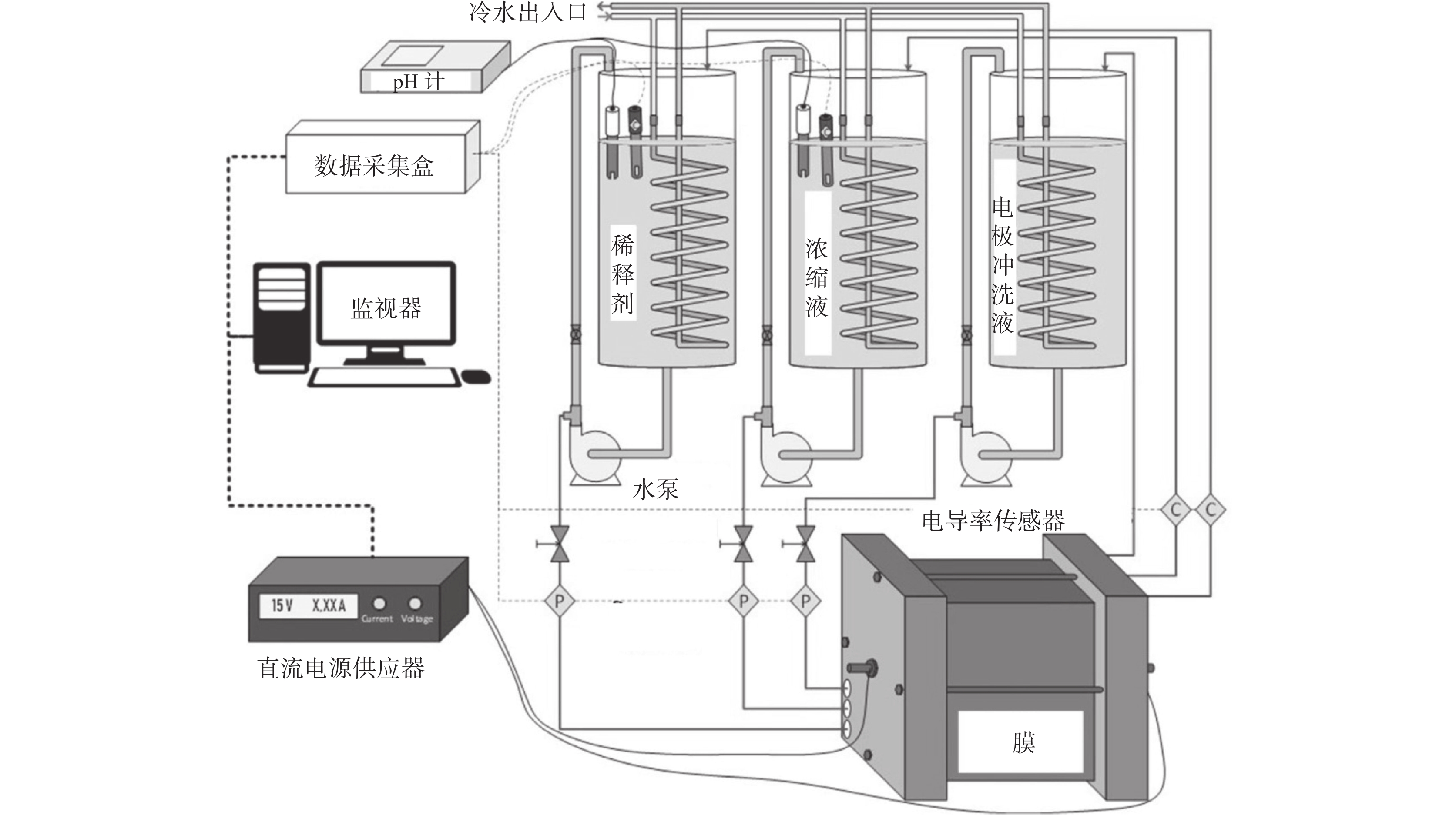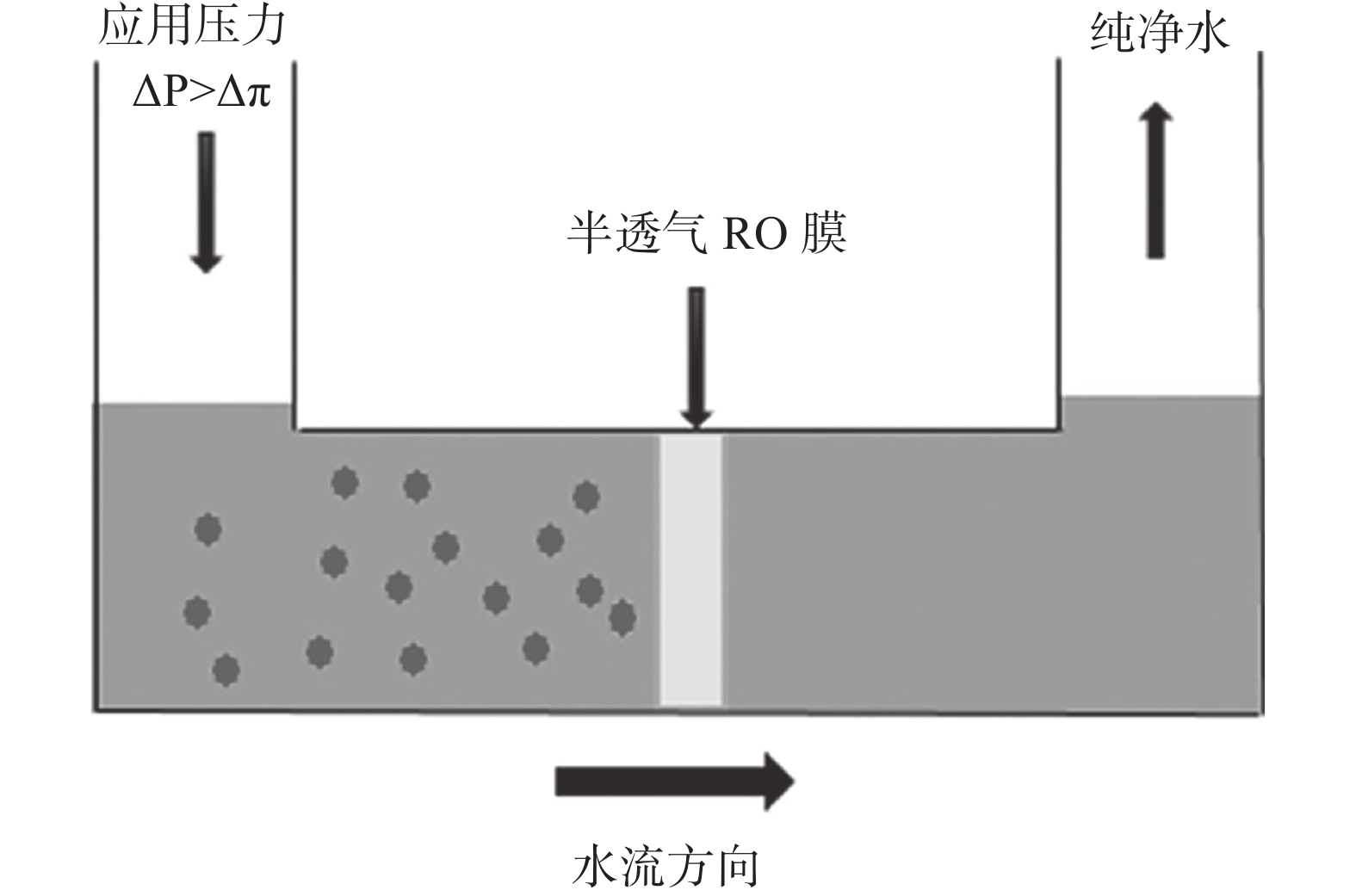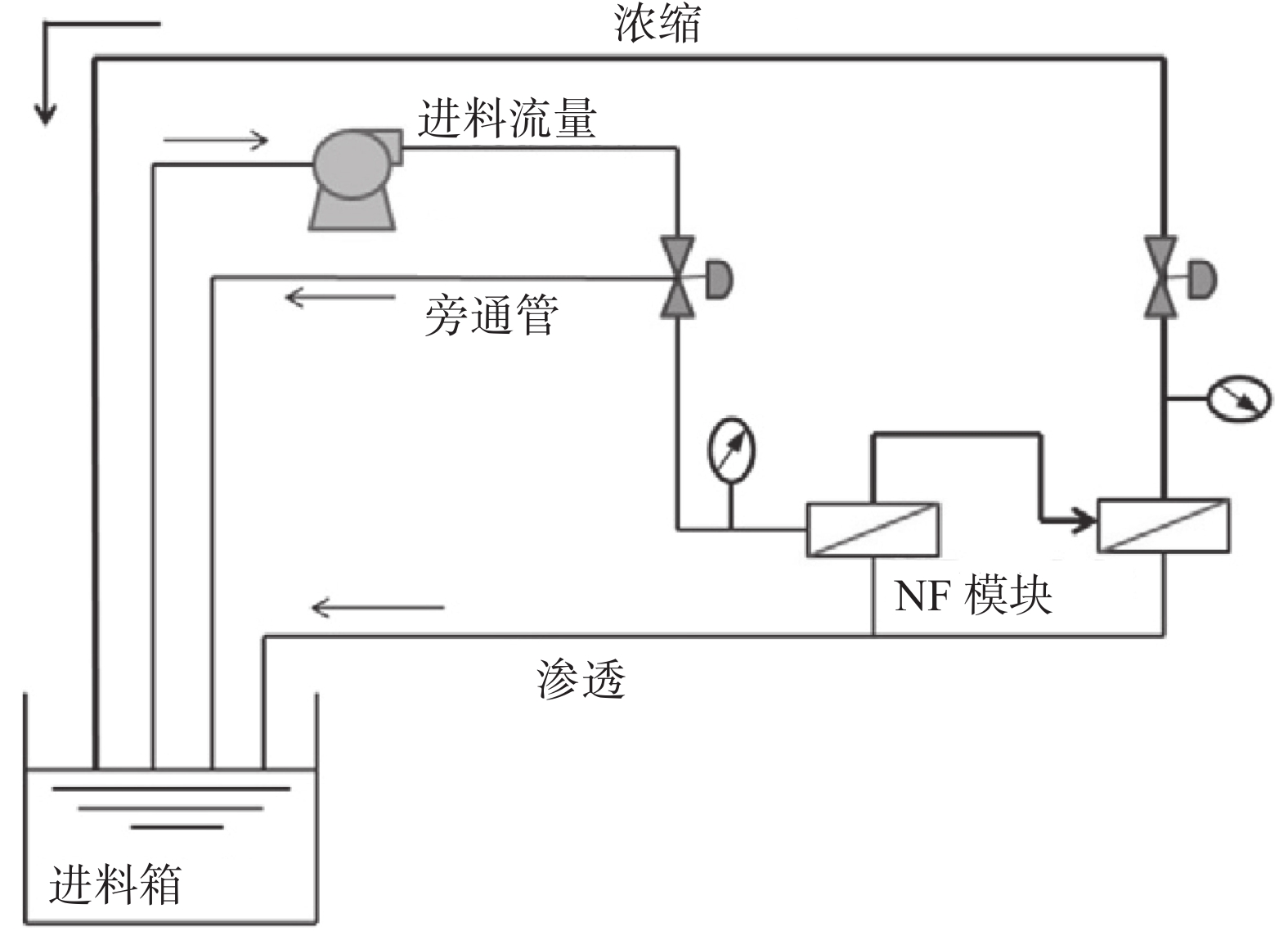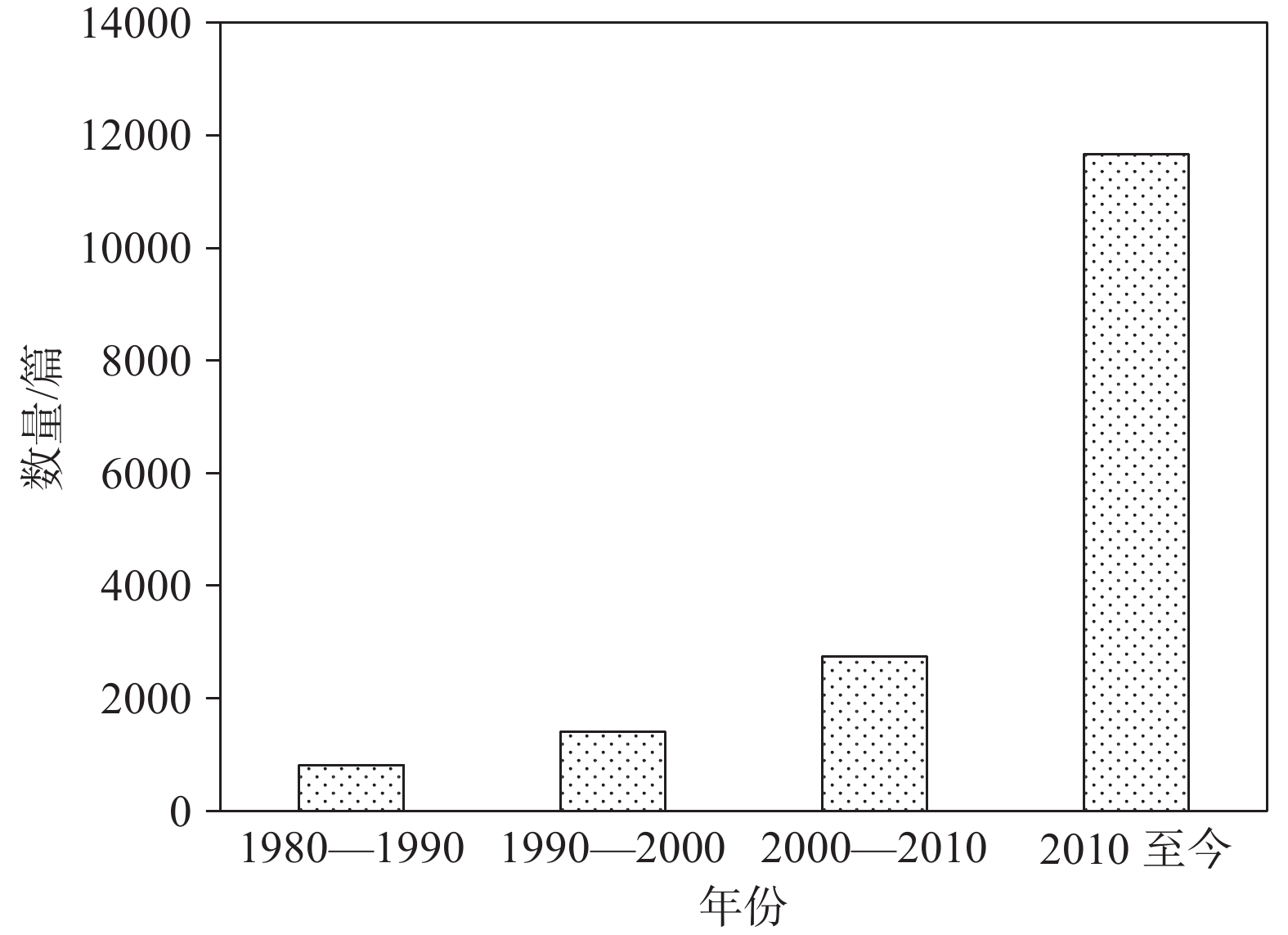Harmfulness of fluorine−bearing groundwater and its current situation and progress of treatment technology
-
摘要:
研究目的 地下水氟污染在世界范围内都被认为是一项重大公共卫生危害。据统计,全球有约2亿多人正面临氟中毒风险,至少有28个国家出现过饮用高氟水造成的氟中毒事件。高氟地下水主要分布于干旱缺水的欠发达地区,普遍缺乏可替代的饮用水源,使地方性氟中毒问题长期得不到有效解决。因此,研发经济可行的氟化物去除技术成为解决高氟地下水问题的关键。
研究方法 基于文献调研结果,以现阶段全球含氟地下水的污染现状为基础,综合考虑研究深度、理论和应用可行性、去除效率、可再生性等多种因素,对国内外含氟地下水研究和应用案例进行总结分析。
研究结果 介绍了世界范围内含氟地下水的成因和分布,系统总结了现有主流含氟地下水处理技术的优劣、除氟机理和应用进展,并对存在问题和未来发展趋势进行了分析和展望。
结论 每种技术都有各自的处理优势和一定的局限性,在选择和应用时需要综合考虑含氟地下水的水质情况和目标需求。同时,当前的地下水除氟技术在研发过程中也存在服务目标针对性不强、综合处理效率不佳以及吸附容量应用与理论值偏差较大等问题。多种处理工艺的耦合应用可以更好地发挥不同处理技术的优势,取得取长补短的效果,正受到人们日益关注。此外,多污染物的联合去除以及结构可人工调控的新型吸附材料的设计研发也是未来重要发展方向。
Abstract:This paper is the result of hydrogeological survey engineering.
Objective Fluorine contaminated groundwater is considered a major public health hazard worldwide. According to statistics, over 200 million people worldwide are at risk of fluorosis, and at least 28 countries have experienced fluorosis incidents caused by drinking high fluoride water. High fluoride groundwater is mainly distributed in underdeveloped areas with drought and water scarcity, and there is a general lack of alternative drinking water sources, making the problem of endemic fluorosis difficult to effectively solve for a long time. Therefore, developing economically feasible fluoride removal technologies has become the key to solving the problem of high fluoride groundwater.
Methods Based on the results of literature research and the current global pollution status of fluorinated groundwater, This article summarized and analyzed the research and application cases of fluorinated groundwater both domestically and internationally, taking into account various factors such as research depth, theoretical and application feasibility, removal efficiency, and renewability comprehensively.
Results This article systematically introduced the causes and distribution of fluorinated groundwater worldwide, summarized the advantages and disadvantages of existing mainstream fluorinated groundwater treatment technologies, fluoride removal mechanisms and application progress, and analyzed and prospected the existing problems and future development trends.
Conclusions Each technology had its own processing advantages and certain limitations, and when selecting and applying specific technologies, it was necessary to comprehensively consider the water quality and target requirements of fluorine contaminated groundwater. At the same time, there were also problems in the current research and development process of groundwater fluoride removal technology, such as lack of targeted service objectives, poor comprehensive treatment efficiency, and significant deviation between the application of adsorption capacity and theoretical values. The coupling application of multiple treatment processes could better leverage the advantages of different treatment technologies and achieved the effect of complementing each other's strengths, which was receiving increasing attention from people. In addition, the joint removal of multiple pollutants and the design and development of new adsorption materials with manually adjustable structures are also important development directions in the future.
-

-
图 1 地下水中氟离子的来源(据Vithanage and Bhattacharya, 2015修改)
Figure 1.
图 2 常规沉淀法简易装置图(a)及流化床反应器的实验装置原理图(b)(据Lacson et al., 2021修改)
Figure 2.
图 3 离子交换树脂除氟原理图(据Yu et al., 2021修改)
Figure 3.
图 4 (a)电絮凝技术原理图(修改自Castaneda et al., 2021);(b)电絮凝除氟装置示意图(据Haldar and Gupta, 2020修改)
Figure 4.
图 5 氧化石墨烯/氧化铝材料吸附氟离子机理图(据Xu et al., 2020修改)
Figure 5.
图 6 La−UiO−66−(COOH)2吸附剂的制备流程(a)及除氟机制(b)(据Zhao et al., 2022)
Figure 6.
图 7 氟化物在生物炭基材料上的吸附机理(据Kumar et al., 2022修改)
Figure 7.
图 8 MgO−MgFe2O4/GO 除氟机理示意图(据Sahoo and Hota, 2018修改)
Figure 8.
图 9 氟在LC−Ce材料吸附机制(据Nehra et al., 2020修改)
Figure 9.
图 10 电渗析原理图(据Aliaskari and Schäfer, 2021修改)
Figure 10.
图 11 反渗透工作原理图(据Hailemariam et al., 2020修改)
Figure 11.
图 12 纳滤工作组件示意图(据Xu et al., 2015修改)
Figure 12.
表 1 氟去除技术对比
Table 1. Comparison of fluorine removal technologies
去除技术 优势 局限性 部分去除案例 初始浓度/
(mg/L)去除率/% 参考文献 沉淀法 原理和装置简单,运行成本低,操作便捷,工艺技术成熟,可同步去除多种污染物 去除效率低,可能生成大量溶解性铝及有毒氟铝复合物污泥,占地面积大,主要应用于工业废水 4~16 77~90 Kumar et al.,
2022离子交换法 有毒污泥产量有限(回收率高),选择性去除离子,去除率高 离子交换树脂价格昂贵,易受干扰离子(硫酸盐,磷酸盐,氯化物,碳酸氢盐等)干扰,使用的介质产生有毒固体废物,效率依赖pH值 10 69~97 Castel et al.,
2000电絮凝法 适用污染物范围广,运行稳定,无二次污染,高去除率,可同步去除微生物 释放铝离子及其水解产物,电极易钝化,高能耗 2~125 68.9~96 Castaneda et al.,
2021吸附法 吸附剂易获取成本低,操作简单,吸附剂可用范围广,灵活性和去除效果好,选择性离子去除,通常不需要后处理 需要重新调整pH值,易受常见离子干扰,吸附剂耗尽后需要更换,人员素质要求高 5~100 35~97.4 Takmil et al.,
2020膜技术 去除率高,自动化程度高,无需添加药剂,不影响水体颜色和味道,可同时去除其他污染物 投资、能耗、运维成本高,污垢和结垢会降低效率,需前置预处理,浓水处理困难 0.8~50 42~99 Jadhav et al.,
2015 -
[1] Abiye T, Bybee G, Leshomo J. 2018. Fluoride concentrations in the arid Namaqualand and the Waterberg groundwater, South Africa: understanding the controls of mobilization through hydrogeochemical and environmental isotopic approaches[J]. Groundwater for Sustainable Development, 6: 112−120. doi: 10.1016/j.gsd.2017.12.004
[2] Aliaskari M, Schäfer A I. 2021. Nitrate, arsenic and fluoride removal by electrodialysis from brackish groundwater[J]. Water Research, 190: 116683. doi: 10.1016/j.watres.2020.116683
[3] Amini M, Mueller K, Abbaspour K C, Rosenberg T, Afyuni M, Møller K N, Sarr M, Johnson C A. 2008. Statistical modeling of global geogenic fluoride contamination in groundwaters[J]. Environmental Science & Technology, 42(10): 3662−3668.
[4] An Yonghui, Zhang Fucun, Sun Jianping, Cai Wutian, Yao Xiuju, Li Xufeng. 2006. Geological environment characteristics and prevention and control strategies of drinking water endemic diseases in China[J]. Chinese Journal of Endemic Diseases, 25(2): 220−221 (in Chinese).
[5] Arya A, Iqbal M, Yadav V, Agarwal T, Gawali R, Jana K S, Datta D. 2022. Fluoride ion removal using amine modified polymeric resin: Batch and column studies[J]. Materials Today: Proceedings, 57: 1626−1636. doi: 10.1016/j.matpr.2021.12.234
[6] Ayoob S, Gupta A K, Bhat V T. 2008. A conceptual overview on sustainable technologies for the defluoridation of drinking water[J]. Critical Reviews in Environmental Science & Technology, 38(6): 401−470.
[7] Ayoob S, Gupta A K. 2006. Fluoride in drinking water: A review on the status and stress effects[J]. Critical Reviews in Environmental Science and Technology, 36(6): 433−487. doi: 10.1080/10643380600678112
[8] Balarak D, Mahdavi Y, Bazrafshan E, Mahvi A H, Esfandyari Y. 2016. Adsorption of fluoride from aqueous solutions by carbon nanotubes: Determination of equilibrium, kinetic, and thermodynamic parameters[J]. Fluoride, 49(1): 71.
[9] Bennajah M, Gourich B, Essadki A H, Vial C, Delmas H. 2009. Defluoridation of Morocco drinking water by electrocoagulation / electroflottation in an electrochemical external−loop airlift reactor[J]. Chemical Engineering Journal, 148(1): 122−131. doi: 10.1016/j.cej.2008.08.014
[10] Bornff C S. 1934. Removal of fluorides from drinking waters[J]. Industrial & Engineering Chemistry, 26(1): 69−71.
[11] Bouhadjar S I, Kopp H, Britsch P, Deowan A S, Hoinkis J, Bundschuh J. 2019. Solar powered nanofiltration for drinking water production from fluoride−containing groundwater—A pilot study towards developing a sustainable and low−cost treatment plant[J]. Journal of Environmental Management, 231: 1263−1269. doi: 10.1016/j.jenvman.2018.07.067
[12] Cao H, Xie X, Wang Y, Liu H. 2022. Predicting geogenic groundwater fluoride contamination throughout China[J]. Journal of Environmental Sciences, 115: 140−148. doi: 10.1016/j.jes.2021.07.005
[13] Cao Wengeng, Wang Yanyan, Ren Yu, Fei Yuhong, Li Jincheng, Li Zeyan, Zhang Dong, Shuai Guanyin. 2022. Status and progress of treatment technologies for arsenic−containing groundwater[J]. Geology in China, 49(5): 1408−1426 (in Chinese with English abstract).
[14] Castaneda L F, Rodriguez J F, Nava J L. 2021. Electrocoagulation as an affordable technology for decontamination of drinking water containing fluoride: A critical review[J]. Chemical Engineering Journal, 413: 127529. doi: 10.1016/j.cej.2020.127529
[15] Castel C, Schweizer M, Simonnot M O, Sardin M. 2000. Selective removal of fluoride ions by a two−way ion−exchange cyclic process[J]. Chemical Engineering Science, 55(17): 3341−3352. doi: 10.1016/S0009-2509(00)00009-9
[16] Chae G T, Yun S T, Mayer B, Kim K H, Kim S Y, Kwon J S, Kim K, Koh Y K. 2007. Fluorine geochemistry in bedrock groundwater of South Korea[J]. Science of the Total Environment, 385(1/3): 272−283. doi: 10.1016/j.scitotenv.2007.06.038
[17] Chandrajith R, Diyabalanage S, Dissanayake C. 2020. Geogenic fluoride and arsenic in groundwater of Sri Lanka and its implications to community health[J]. Groundwater for Sustainable Development, 10: 100359. doi: 10.1016/j.gsd.2020.100359
[18] Chang Bing. 2016. Simultaneous Removal Arseanate and Phosphate from Groundwater with Aluminum−Zirconiium Composite Metal Oxide[D]. Yangling: Northwest A & F University(in Chinese with English abstract).
[19] Chen Congcong, Qian Guanglei, Xie Chenxin, Zhao Hui, Lei Taiping, Teng Houkai, Zhou Lishan. 2020. Influencing factors and kinetics analysis of electrocoagulation with bipolar aluminum electrodes treating high fluorine groundwater[J]. Chinese Journal of Environmental Engineering, 14(5): 1216−1223 (in Chinese with English abstract).
[20] Chen Jingxian. 2017. Preparation of Metal Modified Chitosancomposite Adsorbent and Performance of Fluoride Removal from Water[D]. Guangzhou: Guangdong Pharmaceutical University(in Chinese with English abstract).
[21] Chen Lang. 2020. Study on Fluoride Removal from Groundwater Using CTAB Modified Composite Material of Lanthanum and Iron[D]. Chengdu: Chengdu University of Technology(in Chinese with English abstract).
[22] Chen Nan. 2012. Research on Fluoride Adsorption Behavior from Groundwater Using Natural and Synthesized Porous Clay Materials[D]. Beijing: China University of Geosciences (Beijing) (in Chinese with English abstract).
[23] Cui Bing, Jin Yi, Yang Zekun. 2023. Research on the treatment of high fluoride wastewater by calcium salt−coagulation method[J]. Industrial Water Treatment, 43(6): 150−155 (in Chinese with English abstract).
[24] Cui Zimin. 2011. Simultaneous Removal Arsenate Andfluoride from Groundwater with Coprecipitated Aluminum−Ironhydroxide[D]. Harbin: Harbin Institute of Technology(in Chinese with English abstract).
[25] Das D, Nandi B K. 2022. Removal of co−existing Fe (II), As (V) and fluoride ions from groundwater by electrocoagulation[J]. Groundwater for Sustainable Development, 17: 100752. doi: 10.1016/j.gsd.2022.100752
[26] Davis M E. 1991. Zeolites and molecular sieves: not just ordinary catalysts[J]. Industrial & Engineering Chemistry Research, 30(8): 1675−1683.
[27] Dayananda D, Sarva V R, Prasad S V, Arunachalam J, Ghosh N N. 2014. Preparation of CaO loaded mesoporous Al2O3: Efficient adsorbent for fluoride removal from water[J]. Chemical Engineering Journal, 248: 430−439. doi: 10.1016/j.cej.2014.03.064
[28] Dehghani M H, Haghighat G A, Yetilmezsoy K, Mckay G, Heibati B, Tyagi I, Agarwal S, Gupta V K. 2016. Adsorptive removal of fluoride from aqueous solution using single−and multi−walled carbon nanotubes[J]. Journal of Molecular Liquids, 216: 401−410. doi: 10.1016/j.molliq.2016.01.057
[29] Devlin T R, Kowalski M S, Pagaduan E, Zhang X, Wei V, Oleszkiewicz J A. 2019. Electrocoagulation of wastewater using aluminum, iron, and magnesium electrodes[J]. Journal of Hazardous Materials, 368: 862−868. doi: 10.1016/j.jhazmat.2018.10.017
[30] Dolottseva I. 2013. Effects of environmental fluoride on plants, animals and humans[J]. Prospects of Territories Development: The Theory and Practice, 19(5): 8−11.
[31] Dong Q, Yang D, Luo L, He Q, Cai F, Cheng S, Chen Y. 2021. Engineering porous biochar for capacitive fluorine removal[J]. Separation and Purification Technology, 257: 117932. doi: 10.1016/j.seppur.2020.117932
[32] Dong Runjian, Li Jian, Hu Hao, Liu Feng, Li Jia, Luo Gang. 2018. Experiment of technological process for high fluoride−containing groundwater treatment[J]. Water Purification Technology, 37(6): 49−53, 67 (in Chinese with English abstract).
[33] Dong S, Liu B, Chen Y, Ma M, Liu X, Wang C. 2022. Hydro−geochemical control of high arsenic and fluoride groundwater in arid and semi−arid areas: A case study of Tumochuan Plain, China[J]. Chemosphere, 301: 134657. doi: 10.1016/j.chemosphere.2022.134657
[34] Dou Ruoan, Chen Binbin, Luo Shengqiao, Luo Kai. 2016. Study on the treatment of high concentration fluoride− containing wastewater by chemical precipitation process[J]. Organo−Fluorine Industry, 2: 9−11, 27 (in Chinese with English abstract).
[35] Dzieniszewska A, Nowicki J, Rzepa G, Kyziol−Komosinska J, Semeniuk I, Kiełkiewicz D, Czupioł J. 2022. Adsorptive removal of fluoride using ionic liquid−functionalized chitosan–Equilibrium and mechanism studies[J]. International Journal of Biological Macromolecules, 210: 483−493. doi: 10.1016/j.ijbiomac.2022.04.179
[36] Feng Haiyuan, Wu Zhongzhong. 2019. Groundwater fluorine pollution in kashin−beck disease area in sichuan province and study on the removal process[J]. Anhui Chemical Industry, 45(3): 94−95, 98 (in Chinese with English abstract).
[37] Gao Y, Li M, Ru Y, Fu J. 2021. Fluoride removal from water by using micron zirconia/zeolite molecular sieve: Characterization and mechanism[J]. Groundwater for Sustainable Development, 13: 100567. doi: 10.1016/j.gsd.2021.100567
[38] Gao Zongren. 2022. Application of ultrafiltration−reverse osmosis process in a project of fluoride removal from groundwater[J]. Industrial Water & Wastewater, 53(2): 12−15 (in Chinese with English abstract).
[39] Gasparotto J M, Pinto D, de Paula N, Maraschin M, Franco D S P, Carissimi E, Foletto E L, Jahn S L, Silva L F O, Dotto G L. 2023. Preparation of alumina−supported Fe−Al−La composite for fluoride removal from an aqueous matrix[J]. Environmental Science and Pollution Research, 30(14): 42416−42426. doi: 10.1007/s11356-023-25231-1
[40] Ghorai S, Pant K K. 2005. Equilibrium, kinetics and breakthrough studies for adsorption of fluoride on activated alumina[J]. Separation & Purification Technology, 42(3): 265−271.
[41] Ghosh S, Malloum A, Igwegbe C A, Ighalo J O, Ahmadi S, Dehghani M H, Othmani A, Gökkuş Ö, Mubarak N M. 2022. New generation adsorbents for the removal of fluoride from water and wastewater: A review [J]. Journal of Molecular Liquids, 346: 118257.
[42] Gitari W M, Izuagie A A, Gumbo J R. 2020. Synthesis, characterization and batch assessment of groundwater fluoride removal capacity of trimetal Mg/Ce/Mn oxide−modified diatomaceous earth[J]. Arabian Journal of Chemistry, 13(1): 1−16. doi: 10.1016/j.arabjc.2017.01.002
[43] Gitari W, Ngulube T, Masindi V, Gumbo J. 2015. Defluoridation of groundwater using Fe3+−modified bentonite clay: Optimization of adsorption conditions[J]. Desalination and Water Treatment, 53(6): 1578−1590. doi: 10.1080/19443994.2013.855669
[44] Gmar S, Ben Salah Sayadi I, Helali N, Tlili M, Ben Amor M. 2015. Desalination and defluoridation of tap water by electrodialysis[J]. Environmental Processes, 2(Suppl.1): 209−222.
[45] Golbad S, Khoshnoud P, Keleney G, Abu−Zahra N. 2020. Synthesis and characterization of highly crystalline Na−X zeolite from class F fly ash[J]. Water and Environment Journal, 34(3): 342−349. doi: 10.1111/wej.12468
[46] Goncharuk V, Deremeshko L, Balakina M, Kucheruk D. 2013. Purification of waters containing fluorine by low pressure reverse osmosis for their complex treatment[J]. Journal of Water Chemistry and Technology, 35: 122−127. doi: 10.3103/S1063455X13030053
[47] Govindan K, Raja M, Maheshwari S U, Noel M, Oren Y. 2015. Comparison and understanding of fluoride removal mechanism in Ca2+, Mg2+ and Al3+ ion assisted electrocoagulation process using Fe and Al electrodes[J]. Journal of Environmental Chemical Engineering, 3(3): 1784−1793. doi: 10.1016/j.jece.2015.06.014
[48] Guo Huaming, Yang Suzhen, Shen Zhaoli. 2007. High arsenic groundwater in the world: Overview and research[J]. Perspectives Advances in Earth Science, 22(11): 1109−1117 (in Chinese with English abstract).
[49] Guo W, Lin H F, Zhu H X, Lei M, Feng J P. 2023. Preparation and application of magnesium oxide nanoparticles for superiorly fluoride removal[J]. Journal of Alloys and Compounds, 960(2023): 170935.
[50] Gupta S, Mondal D. 2015. Fluoride accumulation in crops and vegetables: Indian perspectives. Fluorine: Chemistry, Analysis, Function and Effects[J]. The Royal Society of Chemistry, UK: 117−139.
[51] Hailemariam R H, Woo Y C, Damtie M M, Kim B C, Park K D, Choi J S. 2020. Reverse osmosis membrane fabrication and modification technologies and future trends: A review[J]. Advances in Colloid and Interface Science, 276: 102100. doi: 10.1016/j.cis.2019.102100
[52] Haldar A, Gupta A. 2020. Application of electrocoagulation: Issues with community−level defluoridation[J]. International Journal of Environmental Science and Technology, 17: 789−798. doi: 10.1007/s13762-019-02323-5
[53] Han Jianxun, He Aiguo. 2004. Methods of treatment of wastewater containing fluorine[J]. Organo−Fluorine Industry, 3: 27−36 (in Chinese with English abstract).
[54] Han Ying, Zhang Hongmin, Zhang Yongfeng, Zhang Xin. 2017. Distribution reqularity, origin and quality division of high arsenic, fluorine and iodine contents in groundwater in Datong Basin[J]. Geological Survey of China, 4(1): 57−68 (in Chinese with English abstract).
[55] He Jin, Zhang Fucun, Han Shuangbao, Li Xufeng, Yao Xiuju, Zhang Hui. 2010. The distribution and genetic types of high−fluoride groundwater in northern China[J]. Geology in China, 37(3): 621−626 (in Chinese with English abstract).
[56] Hoinkis J, Valero−Freitag S, Caporgno M P, Pätzold C. 2011. Removal of nitrate and fluoride by nanofiltration–a comparative study[J]. Desalination and Water Treatment, 30(1/3): 278−288. doi: 10.5004/dwt.2011.2103
[57] Hu H, Yang L, Lin Z, Xiang X, Jiang X, Hou L. 2018. Preparation and characterization of novel magnetic Fe3O4/chitosan/Al(OH)3 beads and its adsorption for fluoride[J]. International Journal of Biological Macromolecules, 114: 256−262. doi: 10.1016/j.ijbiomac.2018.03.094
[58] Huang H M, Liu J H, Zhang P, Zhang D D, Gao F M. 2017. Investigation on the simultaneous removal of fluoride, ammonia nitrogen and phosphate from semiconductor wastewater using chemical precipitation[J]. Chemical Engineering Journal, 307: 696−706. doi: 10.1016/j.cej.2016.08.134
[59] Huang J Y, Liu T, Zhang Y M, Hu P C. 2023. Reinforced adsorption mechanism of fluorine ions by calcium−depleted hydroxyapatite and application in the raffinate from the vanadium industry[J]. Chemical Engineering Journal, 452: 139379. doi: 10.1016/j.cej.2022.139379
[60] Hudak P F, Sanmanee S. 2003. Spatial patterns of nitrate, chloride, sulfate, and fluoride concentrations in the woodbine aquifer of North−Central Texas[J]. Environmental Monitoring and Assessment, 82: 311−320. doi: 10.1023/A:1021946402095
[61] Inaniyan M, Raychoudhury T. 2019. Application of activated carbon–metal composite for fluoride removal from contaminated groundwater in India[J]. International Journal of Environmental Science and Technology, 16: 7545−7554. doi: 10.1007/s13762-018-2097-9
[62] Iwar R T, Ugwudike B O. 2022. Groundwater fluoride removal by novel activated carbon/aluminium oxide composite derived from raffia palm shells: Optimization of batch operations and field−scale point of use system evaluation[J]. Results in Engineering, 14: 100407. doi: 10.1016/j.rineng.2022.100407
[63] Jadhav S V, Bringas E, Yadav G D, Rathod V K, Ortiz I, Marathe K V. 2015. Arsenic and fluoride contaminated groundwaters: A review of current technologies for contaminants removal[J]. Journal of Environmental Management, 162: 306−325.
[64] Jha P K, Tripathi P. 2021. Arsenic and fluoride contamination in groundwater: A review of global scenarios with special reference to India[J]. Groundwater for Sustainable Development, 13: 100576. doi: 10.1016/j.gsd.2021.100576
[65] Jia Y, Xi B, Jiang Y, Guo H, Yang Y, Lian X, Han S. 2018. Distribution, formation and human−induced evolution of geogenic contaminated groundwater in China: A review[J]. Science of the Total Environment, 643: 967−993. doi: 10.1016/j.scitotenv.2018.06.201
[66] Kang D, Yu X, Tong S, Ge M, Zuo J, Cao C, Song W. 2013. Performance and mechanism of Mg/Fe layered double hydroxides for fluoride and arsenate removal from aqueous solution[J]. Chemical Engineering Journal, 228: 731−740. doi: 10.1016/j.cej.2013.05.041
[67] Khatri N, Tyagi S. 2015. Influences of natural and anthropogenic factors on surface and groundwater quality in rural and urban areas[J]. Frontiers in Life Science, 8(1): 23−39. doi: 10.1080/21553769.2014.933716
[68] Kimambo V, Bhattacharya P, Mtalo F, Mtamba J, Ahmad A. 2019. Fluoride occurrence in groundwater systems at global scale and status of defluoridation–state of the art[J]. Groundwater for Sustainable Development, 9: 100223. doi: 10.1016/j.gsd.2019.100223
[69] Ku Y, Chiou H, Wang W. 2002. The removal of fluoride ion from aqueous solution by a cation synthetic resin[J]. Separation Science and Technology, 37(1): 89−103. doi: 10.1081/SS-120000323
[70] Kumar R, Sharma P, Yang W, Sillanpää M, Shang J, Bhattacharya P, Vithanage M, Maity J P. 2022. State−of−the−art of research progress on adsorptive removal of fluoride−contaminated water environments using biochar−based materials: Practical feasibility through reusability and column transport studies[J]. Environmental Research: 114043.
[71] Kumari P, Kumari N, Pathak G. 2015. Defluoridation of water by a biomass: Shorea robusta[J]. International Journal of Advanced Technology in Engineering and Science, 3(1): 1−15.
[72] Kumari U, Siddiqi H, Bal M, Meikap B. 2020. Calcium and zirconium modified acid activated alumina for adsorptive removal of fluoride: Performance evaluation, kinetics, isotherm, characterization and industrial wastewater treatment[J]. Advanced Powder Technology, 31(5): 2045−2060. doi: 10.1016/j.apt.2020.02.035
[73] Kurniawan T A, Lo W, Liang X, Goh H H, Othman M H D, Chong K K, Chew K W. 2023. Remediation technologies for contaminated groundwater due to arsenic (As), mercury (Hg), and/or fluoride (F): A critical review and way forward to contribute to carbon neutrality[J]. Separation and Purification Technology: 123474.
[74] Lacson C F Z, Lu M C, Huang Y H. 2021. Chemical precipitation at extreme fluoride concentration and potential recovery of CaF2 particles by fluidized−bed homogenous crystallization process[J]. Chemical Engineering Journal, 415: 128917. doi: 10.1016/j.cej.2021.128917
[75] Li Yadan, Zhu Shufa, Zhou Ming, Liu Yana. 2020. Electrodialysis removal of water−soluble fluoride from red mud[J]. Chinese Journal of Environmental Engineering, 14(7): 1934−1943 (in Chinese with English abstract).
[76] Liu C H, Zhao X Q, Faria A F, Quiñones K E D, Zhang C H, He Q, Ma J, Shen Y, Zhi Y. 2022. Evaluating the efficiency of nanofiltration and reverse osmosis membrane processes for the removal of per−and polyfluoroalkyl substances from water: A critical review[J]. Separation and Purification Technology, 122161.
[77] Liu D X, Li Y, Liu C, Li B L. 2023. Porous lanthanum−zirconium phosphate with superior adsorption capability of fluorine for water treatment[J]. Journal of Colloid and Interface Science, 636: 588−601. doi: 10.1016/j.jcis.2023.01.062
[78] Liu Jie. 2016. Modified Natural Materals for Enhanced Removal of Fluorine From Aqueous Solution: Characteristics and Mechanisms[D]. Changsha: Hunan University(in Chinese with English abstract).
[79] Liu Y C, Zhang Z J, Zhao X Y, Wen M T, Cao S W, Li Y S. 2021. Arsenic contamination caused by roxarsone transformation with spatiotemporal variation of microbial community structure in a column experiment[J]. Journal of Groundwater Science and Engineering, 9(4): 304−316.
[80] Loganathan P, Vigneswaran S, Kandasamy J, Naidu R. 2013. Defluoridation of drinking water using adsorption processes[J]. Journal of Hazardous Materials, 248: 1−19.
[81] Long J R, Yaghi O M. 2009. The pervasive chemistry of metal–organic frameworks[J]. Chemical Society Reviews, 38(5): 1213−1214. doi: 10.1039/b903811f
[82] Lü L, He J, Wei M, Evans D, Duan X. 2006. Factors influencing the removal of fluoride from aqueous solution by calcined Mg–Al–CO3 layered double hydroxides[J]. Journal of Hazardous Materials, 133(1/3): 119−128. doi: 10.1016/j.jhazmat.2005.10.012
[83] Lü Xiaoli, Zheng Yuejun, Liu Ke, Li Chunyan, Zhao Wei, Han Zhantao. 2024. Characteristics and driving factors of fluoride in groundwater in different urban functional area of Lanzhou city[J]. Hydrogeology & Engineering Geology, 51(2): 215−226 (in Chinese with English abstract).
[84] Malin A J, Bose S, Busgang S A, Gennings C, Thorpy M, Wright R O, Wright R J, Arora M. 2019. Fluoride exposure and sleep patterns among older adolescents in the United States: A cross−sectional study of NHANES 2015–2016[J]. Environmental Health, 18(1): 1−9. doi: 10.1186/s12940-018-0440-8
[85] Meenakshi S, Viswanathan N. 2007. Identification of selective ion−exchange resin for fluoride sorption[J]. Journal of Colloid and Interface Science, 308(2): 438−450. doi: 10.1016/j.jcis.2006.12.032
[86] Mei L, Qiao H, Ke F, Peng C, Hou R, Wan X, Cai H. 2020. One−step synthesis of zirconium dioxide−biochar derived from Camellia oleifera seed shell with enhanced removal capacity for fluoride from water[J]. Applied Surface Science, 509: 144685. doi: 10.1016/j.apsusc.2019.144685
[87] Meng Fanping, Li Yongfu, Zhao Shunshun. 2010. Recent research progress of preparation of modified chitosan for defluoridating drinking water[J]. Modern Chemical Industry, 30(4): 16−20 (in Chinese with English abstract).
[88] Meng X S, Zeng P, Lin S Y, Lin S Y, Wu M R, Yang L, Bao H J, Kang J H, Han H S, Zhang C Y, Sun W. 2023. Deep removal of fluoride from tungsten smelting wastewater by combined chemical coagulation−electrocoagulation treatment: From laboratory test to pilot test[J]. Journal of Cleaner Production, 137914.
[89] Minju N, Venkat Swaroop K, Haribabu K, Sivasubramanian V, Senthil Kumar P. 2015. Removal of fluoride from aqueous media by magnesium oxide−coated nanoparticles[J]. Desalination and Water Treatment, 53(11): 2905−2914. doi: 10.1080/19443994.2013.868837
[90] Mon M, Bruno R, Ferrando−Soria J, Armentano D, Pardo E. 2018. Metal–organic framework technologies for water remediation: towards a sustainable ecosystem[J]. Journal of Materials Chemistry A, 6(12): 4912−4947. doi: 10.1039/C8TA00264A
[91] Mondal P, Mehta D, George S. 2016. Defluoridation studies with synthesized magnesium−incorporated hydroxyapatite and parameter optimization using response surface methodology[J]. Desalination and Water Treatment, 57(56): 27294−27313. doi: 10.1080/19443994.2016.1167628
[92] Mwakabona H T, Mlay H R, Van Der Bruggen B, Njau K N. 2019. Water defluoridation by Fe (III)−loaded sisal fibre: Understanding the influence of the preparation pathways on biosorbents' defluoridation properties[J]. Journal of Hazardous Materials, 362: 99−106. doi: 10.1016/j.jhazmat.2018.08.088
[93] Nagaraj A, Sadasivuni K K, Rajan M. 2017. Investigation of lanthanum impregnated cellulose, derived from biomass, as an adsorbent for the removal of fluoride from drinking water[J]. Carbohydrate Polymers, 176: 402−410. doi: 10.1016/j.carbpol.2017.08.089
[94] National Health Commission of the People's Republic of China. 2019. China Health Statistics Yearbook [M]. Beijing: China Union Medical College Press(in Chinese).
[95] Nehra S, Raghav S, Kumar D. 2020. Biomaterial functionalized cerium nanocomposite for removal of fluoride using central composite design optimization study[J]. Environmental Pollution, 258: 113773. doi: 10.1016/j.envpol.2019.113773
[96] Olaka L A, Wilke F D, Olago D O, Odada E O, Mulch A, Musolff A. 2016. Groundwater fluoride enrichment in an active rift setting: Central Kenya Rift case study[J]. Science of the Total Environment, 545: 641−653.
[97] Onyango M S, Leswifi T Y, Ochieng A, Kuchar D, Otieno F O, Matsuda H. 2009. Breakthrough analysis for water defluoridation using surface−tailored zeolite in a fixed bed column[J]. Industrial & Engineering Chemistry Research, 48(2): 931−937.
[98] Ouyang Z, Yang B, Yi J, Zhu S, Lu S, Liu Y, Li Y, Li Y, Mehmood K, Hussain R. 2021. Exposure to fluoride induces apoptosis in liver of ducks by regulating Cyt−C/Caspase 3/9 signaling pathway[J]. Ecotoxicology and Environmental Safety, 224: 112662. doi: 10.1016/j.ecoenv.2021.112662
[99] Özmen Ö, Koç S, Çelik M. 2011. Evaluation of groundwater quality and contamination around fluorite mineralization, Kaman region, Central Anatolia, Turkey[J]. Geochemistry International, 49: 76−89.
[100] Patel A K, Das N, Goswami R, Kumar M. 2019. Arsenic mobility and potential co−leaching of fluoride from the sediments of three tributaries of the Upper Brahmaputra floodplain, Lakhimpur, Assam, India[J]. Journal of Geochemical Exploration. 203: 45−58.
[101] Poudyal M, Babel S. 2015. Removal of fluoride using granular activated carbon and domestic sewage sludge[C]// Proceedings of the 4th International Conference on Informatics, Environment, Energy and Applications. Pattaya, 139−143.
[102] Ramesha G, Kumara A V, Muralidhara H, Sampath S. 2011. Graphene and graphene oxide as effective adsorbents toward anionic and cationic dyes[J]. Journal of Colloid and Interface Science, 361(1): 270−277. doi: 10.1016/j.jcis.2011.05.050
[103] Rashid U S, Das T K, Sakthivel T S, Seal S, Bezbaruah A N. 2021. GO−CeO₂ nanohybrid for ultra−rapid fluoride removal from drinking water[J]. Science of the Total Environment, 793: 148547. doi: 10.1016/j.scitotenv.2021.148547
[104] Rasool A, Xiao T, Baig Z T, Masood S, Mostofa K M, Iqbal M. 2015. Co−occurrence of arsenic and fluoride in the groundwater of Punjab, Pakistan: source discrimination and health risk assessment[J]. Environmental Science and Pollution Research, 22: 19729−19746. doi: 10.1007/s11356-015-5159-2
[105] Rego R M, Kuriya G, Kurkuri M D, Kigga M. 2021. MOF based engineered materials in water remediation: Recent trends[J]. Journal of Hazardous Materials, 403: 123605. doi: 10.1016/j.jhazmat.2020.123605
[106] Rosales M, Coreño O, Nava J L. 2018. Removal of hydrated silica, fluoride and arsenic from groundwater by electrocoagulation using a continuous reactor with a twelve−cell stack[J]. Chemosphere, 211: 149−155. doi: 10.1016/j.chemosphere.2018.07.113
[107] Sahoo S K, Hota G. 2018. Surface functionalization of GO with MgO/MgFe2O4 binary oxides: a novel magnetic nanoadsorbent for removal of fluoride ions[J]. Journal of Environmental Chemical Engineering, 6(2): 2918−2931. doi: 10.1016/j.jece.2018.04.054
[108] Sandoval M A, Fuentes R, Nava J L, Coreño O, Li Y, Hernández J H. 2019. Simultaneous removal of fluoride and arsenic from groundwater by electrocoagulation using a filter−press flow reactor with a three−cell stack[J]. Separation and Purification Technology, 208: 208−216. doi: 10.1016/j.seppur.2018.02.018
[109] Sang Shuo, Tie Jingxi, Zhang Nan. 2022. Research progress on fluoride removal from groundwater[J]. Technology Innovation and Application, 12(2): 78−82 (in Chinese).
[110] Santhosh C, Velmurugan V, Jacob G, Jeong S K, Grace A N, Bhatnagar A. 2016. Role of nanomaterials in water treatment applications: A review[J]. Chemical Engineering Journal, 306: 1116−1137. doi: 10.1016/j.cej.2016.08.053
[111] Savari A, Hashemi S, Arfaeinia H, Dobaradaran S, Foroutan R, Mahvi A H, Fouladvand M, Sorial G A, Farjadfard S, Ramavandi B. 2020. Physicochemical characteristics and mechanism of fluoride removal using powdered zeolite−zirconium in modes of pulsed & continuous sonication and stirring[J]. Advanced Powder Technology, 31(8): 3521−3532. doi: 10.1016/j.apt.2020.06.039
[112] Savenko A. 2001. Interaction between clay minerals and fluorine−containing solutions[J]. Water Resources, 28: 274−277. doi: 10.1023/A:1010496606751
[113] Shang Y, Xu X, Gao B, Yue Q. 2018. Highly selective and efficient removal of fluoride from aqueous solution by ZrLa dual−metal hydroxide anchored bio−sorbents[J]. Journal of Cleaner Production, 199: 36−46. doi: 10.1016/j.jclepro.2018.07.162
[114] Sharif M, Davis R, Steele K, Kim B, Kresse T, Fazio J. 2008. Inverse geochemical modeling of groundwater evolution with emphasis on arsenic in the Mississippi River Valley alluvial aquifer, Arkansas (USA)[J]. Journal of Hydrology, 350(1/2): 41−55. doi: 10.1016/j.jhydrol.2007.11.027
[115] Sharma B, Agrawal J, Gupta A K. 2011. Emerging challenge: Fluoride contamination in groundwater in Agra District, Uttar Pradesh[J]. Asian Journal of Biological Sciences, 2(1): 131−134.
[116] Shi Tingting, Yang Xiuli, Wang Ningtao. 2009. Experimental study on removing fluoride from wastewater using PFS and CaCl2[J]. Safety and Environmental Engineering, 16(2): 58−61 (in Chinese with English abstract).
[117] Song Qian. 2018. Performance and Mechanism of Fluoride Adsorption from Aqueous Solution by Granular Ceramic Adsorbent Based on Native Volcanic Rocks[D]. Tianjin: Tianjin University(in Chinese with English abstract).
[118] Takmil F, Esmaeili H, Mousavi, S M, Hashemi S A. 2020. Nano−magnetically modifed activated carbon prepared by oak shell for treatment of wastewater containing fluoride ion[J]. Advanced Powder Technology, 31(8): 3236−3245. doi: 10.1016/j.apt.2020.06.015
[119] Tan H M, Pan C G, Yin C, Yu K F. 2023. Toward systematic understanding of adsorptive removal of legacy and emerging per−and polyfluoroalkyl substances (PFASs) by various activated carbons (ACs)[J]. Environmental Research: 116495.
[120] Tang D, Zhang G. 2016. Efficient removal of fluoride by hierarchical Ce–Fe bimetal oxides adsorbent: Thermodynamics, kinetics and mechanism[J]. Chemical Engineering Journal, 283: 721−729. doi: 10.1016/j.cej.2015.08.019
[121] Tang X, Zhou C, Xia W, Liang Y, Zeng Y, Zhao X, Xiong W, Cheng M, Wang Z. 2022. Recent advances in metal–organic framework−based materials for removal of fluoride in water: Performance, mechanism, and potential practical application[J]. Chemical Engineering Journal, 446: 137299.
[122] The Central Patriotic Health Movement Committee. 1990. Atlas of Drinking Water Places in China [M]. Beijing: SinoMaps Press (in Chinese).
[123] Thompson T, Fawell J, Kunikane S, Jackson D, Appleyard S, Callan P, Bartram J, Kingston P, Water S, Organization W H. 2007. Chemical Safety of Drinking Water: Assessing Priorities for Risk Management[M]. Geneva: World Health Organization.
[124] Tian Jian, Liu Yang, Hu Pan, Zhu Yanzhao, Zhang Xiang, Li En. 2021. Research progress of application of magnesium oxide in environmental pollution control[J]. Journal of Hubei University (Natural Science), 43(1): 74−79 (in Chinese with English abstract).
[125] Tomar G, Thareja A, Sarkar S. 2015. Enhanced fluoride removal by hydroxyapatite−modified activated alumina[J]. International Journal of Environmental Science and Technology, 12: 2809−2818. doi: 10.1007/s13762-014-0653-5
[126] Vasudevan S, Kannan B S, Lakshmi J, Mohanraj S, Sozhan G. 2011. Effects of alternating and direct current in electrocoagulation process on the removal of fluoride from water[J]. Journal of Chemical Technology & Biotechnology, 86(3): 428−436.
[127] Velazquez−Jimenez L H, Vences−Alvarez E, Flores−Arciniega J L, Flores−Zuniga H, Rangel−Mendez J R. 2015. Water defluoridation with special emphasis on adsorbents−containing metal oxides and/or hydroxides: A review[J]. Separation and Purification Technology, 150: 292−307. doi: 10.1016/j.seppur.2015.07.006
[128] Vik E A, Carlson D A, Eikum A S, Gjessing E T. 1984. Electrocoagulation of potable water[J]. Water Research, 18(11): 1355−1360. doi: 10.1016/0043-1354(84)90003-4
[129] Vithanage M, Bhattacharya P. 2015. Fluoride in the environment: Sources, distribution and defluoridation[J]. Environmental Chemistry Letters, 13: 131−147. doi: 10.1007/s10311-015-0496-4
[130] Waghmare S S, Arfin T. 2015. Fluoride removal from water by various techniques[J]. International Journal of Environmental Science and Technology, 2(3): 560−571.
[131] Wan S, Lin J, Tao W, Yang Y, Li Y, He F. 2019. Enhanced fluoride removal from water by nanoporous biochar−supported magnesium oxide[J]. Industrial & Engineering Chemistry Research, 58(23): 9988−9996.
[132] Wang Fang. 2019. Research on the characteristics of fly ash and its impact on concrete[J]. China High and New Technology, 4(6): 17−20 (in Chinese).
[133] Wang H, Jiang W W, Nie P F, Hu B, Hu Y S, Huang M H, Liu J Y. 2022. Selective fluoride removal on LaHAP/3D−rGO composite electrode by capacitive deionization[J]. Electrochimica Acta, 429: 141029. doi: 10.1016/j.electacta.2022.141029
[134] Wang Jiahong, Mao Min, Yin Xiaolong. 2016. Thermodynamic and kinetic of fluoride adsorption onto zirconium modified attapulqite[J]. Environmental Chemistry, 35(5): 1067−1075 (in Chinese with English abstract).
[135] Wang Yanxin, Su Chunli, Xie Xianjun, Xie Zuoming. 2010. The genesis of high arsenic groundwater: A case study in Datong basin[J]. Geology in China, 37(3): 771−780 (in Chinese with English abstract).
[136] Wang Z, Gu X, Zhang Y, Zhang X, Ngo H H, Liu Y, Jiang W, Tan X, Wang X, Zhang J. 2021. Activated nano−Al2O3 loaded on polyurethane foam as a potential carrier for fluorine removal[J]. Journal of Water Process Engineering, 44: 102444. doi: 10.1016/j.jwpe.2021.102444
[137] Wei Yong, Li Xianjian, Luo Zhengbo, Li Keying, Guo Ziyin, Shi Rongkai. 2023. Efficiency and mechanism of fluoride removal by electroadsorption of alumina modified activated carbon fiber[J]. China Environmental Science, 43(8): 3974−3982 (in Chinese with English abstract).
[138] Wen D, Zhang F, Zhang E, Wang C, Han S, Zheng Y. 2013. Arsenic, fluoride and iodine in groundwater of China[J]. Journal of Geochemical Exploration, 135: 1−21. doi: 10.1016/j.gexplo.2013.10.012
[139] Wu Huaxiong, Meng Linzhen, Xu Weizong. 1998. Experimental study on the treatment of fluorine−containing wastewater by reverse osmosis method[J]. Electric Power Technology and Environmental Protection, 3: 1−5 (in Chinese).
[140] Xiong Y Y, Li J Q, Feng X F, Meng L N, Zhang L, Meng P P, Luo M B, Luo F. 2017. Using MOF−74 for Hg2+ removal from ultra−low concentration aqueous solution[J]. Journal of Solid State Chemistry, 246: 16−22. doi: 10.1016/j.jssc.2016.10.018
[141] Xu Jingsheng. 2014. Enhanced Removal of Fluoride by Polystyrene Anionexchanger Supported Hydrous Zirconium Oxide Nanoparticles[D]. Nanjing: Nanjing University(in Chinese with English abstract).
[142] Xu L, Gao X L, Li Z K, Gao C J. 2015. Removal of fluoride by nature diatomite from high−fluorine water: an appropriate pretreatment for nanofiltration process[J]. Desalination, 369: 97−104. doi: 10.1016/j.desal.2015.04.033
[143] Xu N, Li S, Li W, Liu Z. 2020. Removal of fluoride by graphene oxide/alumina nanocomposite: Adsorbent preparation, characterization, adsorption performance and mechanisms[J]. Chemistry Select, 5(6): 1818−1828. doi: 10.1002/slct.201904867
[144] Xu X, Zhu X. 2004. Treatment of refectory oily wastewater by electro−coagulation process[J]. Chemosphere, 56(10): 889−894. doi: 10.1016/j.chemosphere.2004.05.003
[145] Xu Yuequn, Liu Jia, Gu Jihao. 2021. Study on the defluorination effect of zinc aluminum electrode electrocoagulation on fluorinated water[J]. Yellow River, 43(5): 100−103, 109 (in Chinese with English abstract).
[146] Yadav K K, Gupta N, Kumar V, Khan S A, Kumar A. 2018. A review of emerging adsorbents and current demand for defluoridation of water: Bright future in water sustainability[J]. Environment International, 111: 80−108. doi: 10.1016/j.envint.2017.11.014
[147] Yadav K K, Kumar S, Pham Q B, Gupta N, Rezania S, Kamyab H, Yadav S, Vymazal J, Kumar V, Tri D Q. 2019. Fluoride contamination, health problems and remediation methods in Asian groundwater: A comprehensive review[J]. Ecotoxicology and Environmental Safety, 182: 109362. doi: 10.1016/j.ecoenv.2019.06.045
[148] Yadav K, Jagadevan S. 2021. Influence of torrefaction and pyrolysis on engineered biochar and its applicability in defluoridation: Insight into adsorption mechanism, batch adsorber design and artificial neural network modelling[J]. Journal of Analytical and Applied Pyrolysis, 154: 105015. doi: 10.1016/j.jaap.2021.105015
[149] Yang Biao, 2012. The Relationship among Water Fluoride, Soil, Cropfluorine in the High Fluoride Area[D]. Taiyuan: Shanxi University(in Chinese with English abstract).
[150] Yang Yanguo, Li Bingchuan, Ma Zhijun, Wang Juncheng, Zhang Wei. 2014. Study on the preparation of modified zeolite and its fluorine removal performance[J]. Bulletin of the Chinese Ceramic Society, 33(7): 1649−1654 (in Chinese with English abstract).
[151] Ye C, Yan B, Ji X, Liao B, Gong R, Pei X, Liu G. 2019. Adsorption of fluoride from aqueous solution by fly ash cenospheres modified with paper mill lime mud: Experimental and modeling[J]. Ecotoxicology and Environmental Safety, 180: 366−373. doi: 10.1016/j.ecoenv.2019.04.086
[152] Ye Y, Liu W, Jiang W, Kang J, Ngo H H, Guo W, Liu Y. 2018. Defluoridation by magnesia–pullulan: Surface complexation modeling and pH neutralization of treated fluoride water by aluminum[J]. Journal of the Taiwan Institute of Chemical Engineers, 93: 625−631. doi: 10.1016/j.jtice.2018.09.011
[153] Yin Dong. 2021. Adsorption of environmental pollutants by carbon nanotubes and their influencing factors[J]. Environmental Science & Technology, 44(S2): 276−283.
[154] Yu T, Chen Y L, Zhang Y Z, Tan X, Xie T, Shao B Y, Huang X. 2021. Novel reusable sulfate−type zirconium alginate ion−exchanger for fluoride removal[J]. Chinese Chemical Letters, 32(11): 3410−3415. doi: 10.1016/j.cclet.2021.04.057
[155] Zakir H, Li D S, Li X, Kang J X. 2015. Defluoridation by a Mg–Al–La triple−metal hydrous oxide: Synthesis, sorption, characterization and emphasis on the neutral pH of treated water[J]. RSC Advances, 5(55): 43906−43916. doi: 10.1039/C5RA05539C
[156] Zhang Jing. 2019. Composite Adjusting and Structure Controlling of Chitosan/Graphene Oxide Based Adsorbents for Fluoride Removal[D]. Beijing: China University of Geosciences (Beijing) (in Chinese with English abstract).
[157] Zhang Kaisheng. 2016. Design and Preparation of Nano−Adsorbents and Adsorption mechanism for Fluoride in Water[D]. Hefei: University of Science and Technology of China(in Chinese with English abstract).
[158] Zhang Ping, Chen Wei, Li Xiaochen, Gao Yan. 2017. Application of modified ion exchange resin in arctic removal[J]. China Science Technology Overview, 10: 10−11 (in Chinese).
[159] Zhang R J, Wang X M, Ali A, Su J F, Wang Z, Li J W, Liu Y. 2022. Single−step removal of calcium, fluoride, and phenol from contaminated water by Aquabacterium sp. CZ3 via facultative anaerobic microbially induced calcium precipitation: Kinetics, mechanism, and characterization[J]. Bioresource Technology, 361: 127707. doi: 10.1016/j.biortech.2022.127707
[160] Zhang X, Qi Y, Chen Z, Song N, Li X, Ren D, Zhang S. 2021. Evaluation of fluoride and cadmium adsorption modification of corn stalk by aluminum trichloride[J]. Applied Surface Science, 543: 148727. doi: 10.1016/j.apsusc.2020.148727
[161] Zhao X, Zhang J, Dai Z, Lei Y, Liu X, Liu G. 2022. Simple preparation and efficient fluoride removal of La anchored Zr−based metal–organic framework adsorbent[J]. Journal of Environmental Chemical Engineering, 10(6): 108807. doi: 10.1016/j.jece.2022.108807
[162] Zhao Yan, Lu Mengnan, Sun Bin, Li Jingfeng, Xu Zhiqing, Teng Dongyu. 2020. Research on industrial application of coagulation and adsorption combined with fluorine removal technology in fluorine−containing mine water[J]. Coal Science and Technology, 48(9): 166−172 (in Chinese with English abstract).
[163] Zhou J, Zhu W, Yu J, Zhang H, Zhang Y, Lin X, Luo X. 2018. Highly selective and efficient removal of fluoride from ground water by layered Al−Zr−La Tri−metal hydroxide[J]. Applied Surface Science, 435: 920−927. doi: 10.1016/j.apsusc.2017.11.108
[164] Zhou X. 2017. Arsenic distribution and source in groundwater of Yangtze River Delta economic region, China[J]. Journal of Groundwater Science and Engineering, 5(4): 343−353. doi: 10.26599/JGSE.2017.9280034
[165] Zhu Lixia, Zhang Dong. 2008. The comparing of active Al2O3 and active mgo in removing fluoride[J]. Environmental Science and Management, 33(10): 127−129 (in Chinese with English abstract).
[166] 安永会, 张福存, 孙建平, 蔡五田, 姚秀菊, 李旭峰. 2006. 我国饮水型地方病地质环境特征与防治对策[J]. 中国地方病学杂志, 25(2): 220−221.
[167] 曹文庚, 王妍妍, 任宇, 费宇红, 李谨丞, 李泽岩, 张栋, 帅官印. 2022. 含砷地下水的治理技术现状与进展[J]. 中国地质, 49(5): 1408−1426. doi: 10.12029/gc20220504
[168] 常冰. 2016. 新型铝基颗粒去除水中砷、氟的效能及机理研究[D]. 杨凌: 西北农林科技大学.
[169] 陈聪聪, 钱光磊, 谢陈鑫, 赵慧, 雷太平, 滕厚开, 周立山. 2020. 双铝电极电絮凝处理高含氟地下水的影响因素及动力学分析[J]. 环境工程学报, 14(5): 1216−1223. doi: 10.12030/j.cjee.201907180
[170] 陈静娴. 2017. 金属改性壳聚糖复合吸附剂的制备及水中除氟性能研究[D]. 广州: 广东药科大学.
[171] 陈浪. 2020. CTAB改性镧铁复合材料去除地下水中氟的研究[D]. 成都: 成都理工大学.
[172] 陈男. 2012. 天然及合成多孔性粘土材料对地下水中氟化物的吸附性能研究[D]. 北京: 中国地质大学(北京).
[173] 崔兵, 金怡, 杨泽坤. 2022. 钙盐−混凝法处理高氟废水的实验研究[J]. 工业水处理, 43(6): 150−155.
[174] 崔自敏. 2011. 铁铝复合吸附剂共除地下水中砷和氟的研究[D]. 哈尔滨: 哈尔滨工业大学.
[175] 董润坚, 李健, 胡浩, 刘枫, 李佳, 罗罡. 2018. 高氟地下水处理工艺技术的试验[J]. 净水技术, 37(6): 49−53,67.
[176] 窦若岸, 陈彬彬, 罗生乔, 罗凯. 2016. 化学沉淀法处理高浓度含氟废水的研究[J]. 有机氟工业, 2: 9−11,27.
[177] 凤海元, 吴忠忠. 2019. 四川省大骨节病区地下水氟污染及除氟工艺研究[J]. 安徽化工, 45(3): 94−95,98. doi: 10.3969/j.issn.1008-553X.2019.03.031
[178] 高宗仁. 2022. 超滤−反渗透工艺在地下水除氟工程中的应用[J]. 工业用水与废水, 53(2): 12−15. doi: 10.3969/j.issn.1009-2455.2022.02.003
[179] 郭华明, 杨素珍, 沈照理. 2007. 富砷地下水研究进展[J]. 地球科学进展, 22(11): 1109−1117. doi: 10.3321/j.issn:1001-8166.2007.11.002
[180] 韩建勋, 贺爱国. 2004. 含氟废水处理方法[J]. 有机氟工业, 3: 27−36.
[181] 韩颖, 张宏民, 张永峰, 张欣. 2017. 大同盆地地下水高砷、氟、碘分布规律与成因分析及质量区划[J]. 中国地质调查, 4(1): 57−68.
[182] 何锦, 张福存, 韩双宝, 李旭峰, 姚秀菊, 张徽. 2010. 中国北方高氟地下水分布特征和成因分析[J]. 中国地质, 37(3): 621−626. doi: 10.3969/j.issn.1000-3657.2010.03.012
[183] 李雅丹, 朱书法, 周鸣, 刘亚纳. 2020. 赤泥中水溶性氟化物的电渗析去除[J]. 环境工程学报, 14(7): 1934−1943. doi: 10.12030/j.cjee.201911005
[184] 刘杰. 2016. 天然材料改性与吸附水中氟的性能研究[D]. 长沙: 湖南大学.
[185] 吕晓立, 郑跃军, 刘可, 李春燕, 赵伟, 韩占涛. 2024. 兰州不同城镇功能区地下水氟赋存特征及影响因素[J]. 水文地质工程地质, 51(2): 215−226.
[186] 孟范平, 李永富, 赵顺顺, 2010. 基于饮用水除氟的改性壳聚糖制备技术研究进展[J]. 现代化工, 30(4): 16−20.
[187] 桑硕, 帖靖玺, 张南. 2022. 地下水除氟研究进展[J]. 科技创新与应用, 12(2): 78−82.
[188] 史婷婷, 杨秀丽, 王宁涛. 2009. 聚合硫酸铁和钙盐除氟试验研究[J]. 安全与环境工程, 16(2): 58−61. doi: 10.3969/j.issn.1671-1556.2009.02.015
[189] 宋倩. 2018. 火山岩基多孔陶粒吸附去除地下水中氟的特性和机理研究[D]. 天津: 天津大学.
[190] 田键, 刘洋, 胡攀, 朱艳超, 张祥, 李恩. 2021. 氧化镁在环境污染治理中应用研究进展[J]. 湖北大学学报(自然科学版), 43(1): 74−79.
[191] 王芳. 2019. 粉煤灰的特性及对混凝土的影响研究[J]. 中国高新科技, 4(6): 17−20.
[192] 王家宏, 毛敏, 尹小龙. 2016. 锆改性凹凸棒土对水中氟的吸附热力学与动力学研究[J]. 环境化学, 35(5): 1067−1075. doi: 10.7524/j.issn.0254-6108.2016.05.2015112602
[193] 王焰新, 苏春利, 谢先军, 谢作明. 2010. 大同盆地地下水砷异常及其成因研究[J]. 中国地质, 37(3): 771−780. doi: 10.3969/j.issn.1000-3657.2010.03.033
[194] 魏永, 李贤建, 罗政博, 李克英, 郭子寅, 施荣凯. 2023. 氧化铝改性活性炭纤维电吸附除氟效能及机理[J]. 中国环境科学, 43(8): 3974−3982. doi: 10.3969/j.issn.1000-6923.2023.08.013
[195] 吴华雄, 孟林珍, 许维宗. 1998. 反渗透法处理含氟废水的试验研究[J]. 电力环境保护, 3: 1−5.
[196] 徐敬生. 2014. 多孔聚苯乙烯树脂负载纳米水合氧化锆的制备及其除氟性能研究[D]. 南京: 南京大学.
[197] 徐越群, 刘佳, 顾吉浩. 2021. 锌铝电极电絮凝法对含氟水除氟效果研究[J]. 人民黄河, 43(5): 100−103,109. doi: 10.3969/j.issn.1000-1379.2021.05.019
[198] 杨彪. 2012. 高氟病区水氟与土壤、作物氟积累的相关关系研究[D]. 太原: 山西大学.
[199] 杨艳国, 李冰川, 马志军, 王俊成, 张威. 2014. 改性沸石的制备与除氟性能研究[J]. 硅酸盐通报, 33(7): 1649−1654.
[200] 尹东. 2021. 碳纳米管对环境污染物的吸附及其影响因素[J]. 环境科学与技术, 44(S2): 276−283.
[201] 张静. 2019. 壳聚糖/氧化石墨烯氟吸附剂的组分调变与结构调控的研究[D]. 北京: 中国地质大学(北京).
[202] 张开胜. 2016. 纳米吸附材料的设计、制备及对水中氟离子去除机理研究[D]. 合肥: 中国科学技术大学.
[203] 张萍, 陈卫, 李晓晨, 高雁. 2017. 改性离子交换树脂除砷方面的应用[J]. 中国科技纵横, 10: 10−11. doi: 10.3969/j.issn.1671-2064.2017.17.008
[204] 赵焰, 陆梦楠, 孙斌, 李井峰, 徐志清, 腾东玉. 2020. 含氟矿井水混凝吸附联合除氟技术工业化应用研究[J]. 煤炭科学技术, 48(9): 166−172.
[205] 中华人民共和国国家卫生健康委员会. 2019. 中国卫生健康统计年鉴[M]. 北京: 中国协和医科大学出版社.
[206] 中央爱国卫生运动委员会. 1990. 中国生活饮用水地图集[M]. 北京: 中国地图出版社.
[207] 朱利霞, 张东. 2008. 活性氧化铝和活性氧化镁处理高氟饮用水的比较[J]. 环境科学与管理, 33(10): 127−129. doi: 10.3969/j.issn.1673-1212.2008.10.035
-




 下载:
下载:
